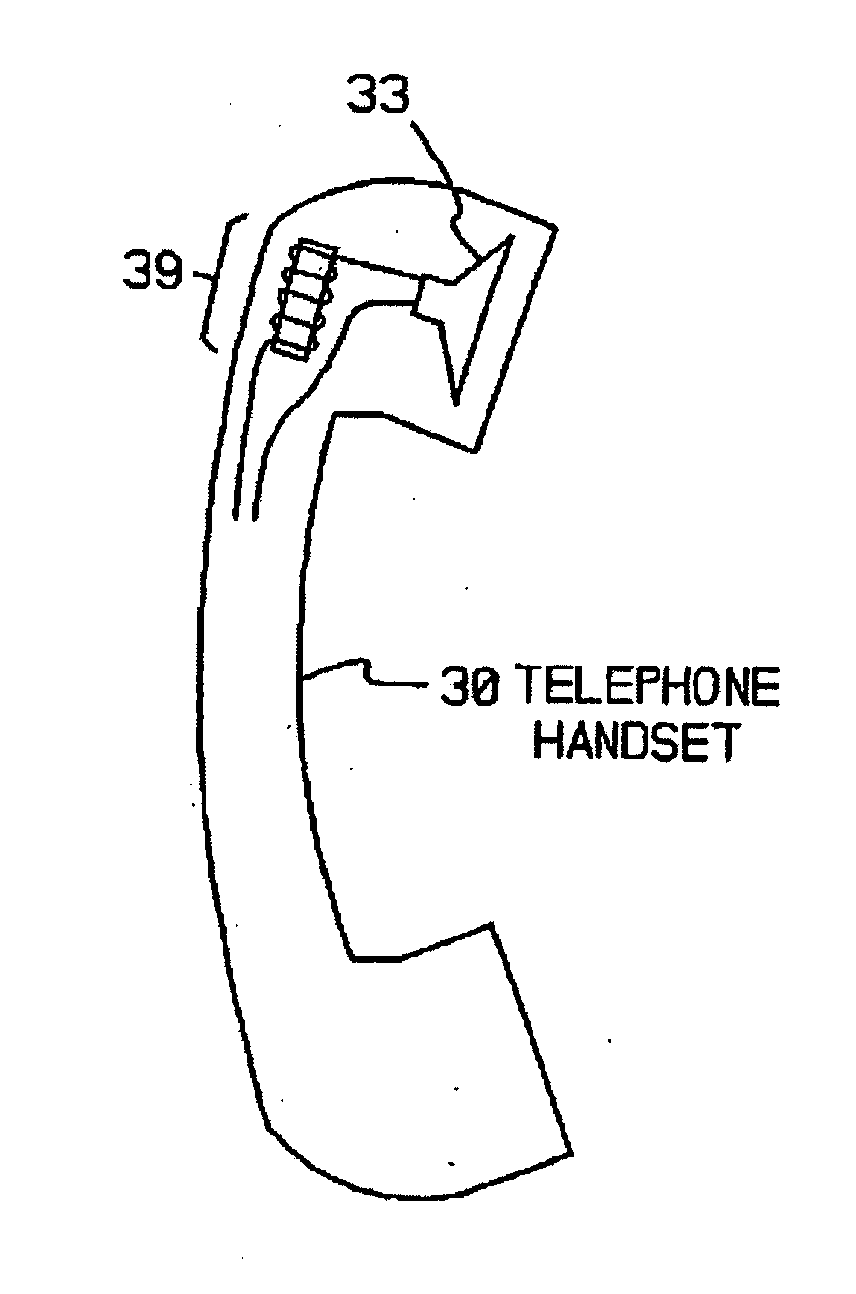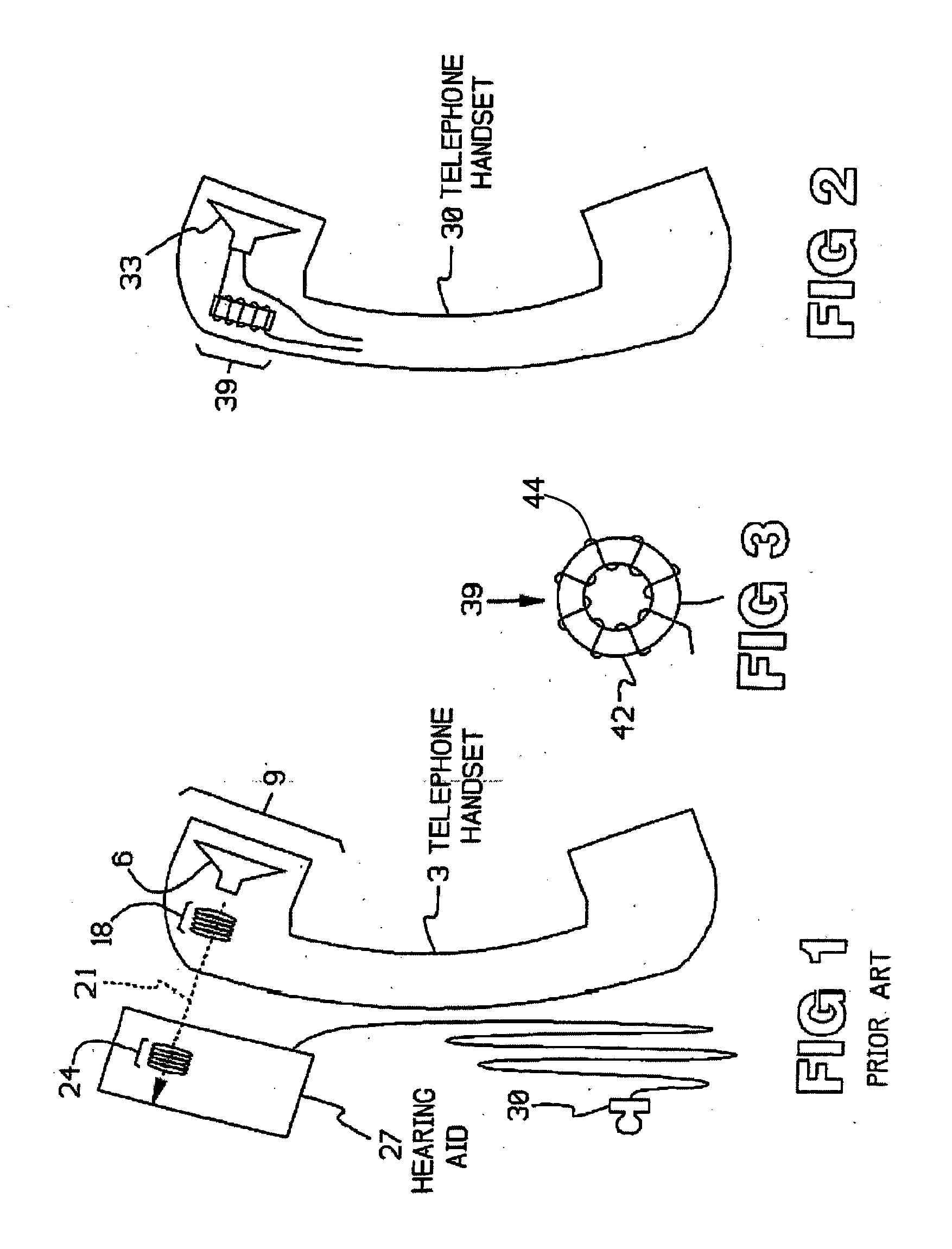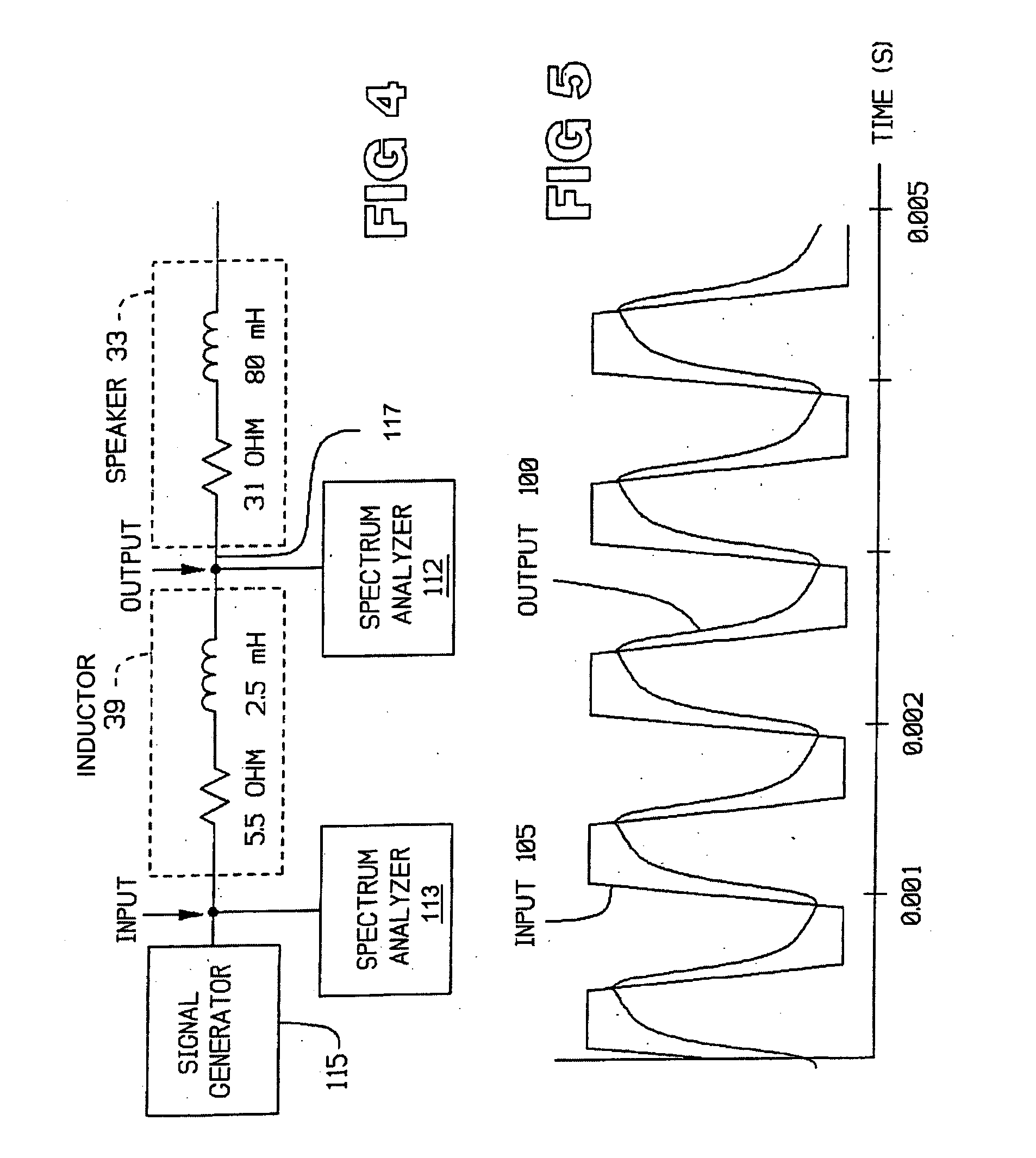Audio signal system
a signal system and audio technology, applied in the field of audio signal devices, can solve the problems of not being able to use in-the-ear and in-the-canal, the bulky and cumbersome use of the system, and the inability of the majority of users to provide the quality audio sound required, so as to enhance the perceived quality of the audio signal and improve the quality of the perceived audio signal
- Summary
- Abstract
- Description
- Claims
- Application Information
AI Technical Summary
Benefits of technology
Problems solved by technology
Method used
Image
Examples
Embodiment Construction
[0026]FIG. 1 illustrates a telephone handset 3, which contains a loudspeaker 6 in the earpiece 9. Many such handsets are equipped with an HAC coil 18, which can be connected with the speaker 6. Such coil-equipped handsets are often termed type-HAC, or Hearing Aid Compatible. The HAC coil 18 produces a magnetic field 21, which couples with a similar coil 24, often termed a T-coil, or telephone coil, within a nearby hearing aid 27, when the latter is held near the handset 3.
[0027] The coupling between HAC coil 18 and coil 24 transfers an electromagnetic field derivative of an electronic signal received by the speaker 6 to the hearing aid 27, wherein hearing aid 27 transforms the field back into an electronic signal. The electromagnetic coupling thus allows the hearing aid to receive substantially the same electronic signal received by the speaker 6. The hearing aid 27 then delivers the signal to an earpiece 30, or other device, wherein the signal is converted to an audio signal (e.g....
PUM
 Login to View More
Login to View More Abstract
Description
Claims
Application Information
 Login to View More
Login to View More - R&D
- Intellectual Property
- Life Sciences
- Materials
- Tech Scout
- Unparalleled Data Quality
- Higher Quality Content
- 60% Fewer Hallucinations
Browse by: Latest US Patents, China's latest patents, Technical Efficacy Thesaurus, Application Domain, Technology Topic, Popular Technical Reports.
© 2025 PatSnap. All rights reserved.Legal|Privacy policy|Modern Slavery Act Transparency Statement|Sitemap|About US| Contact US: help@patsnap.com



